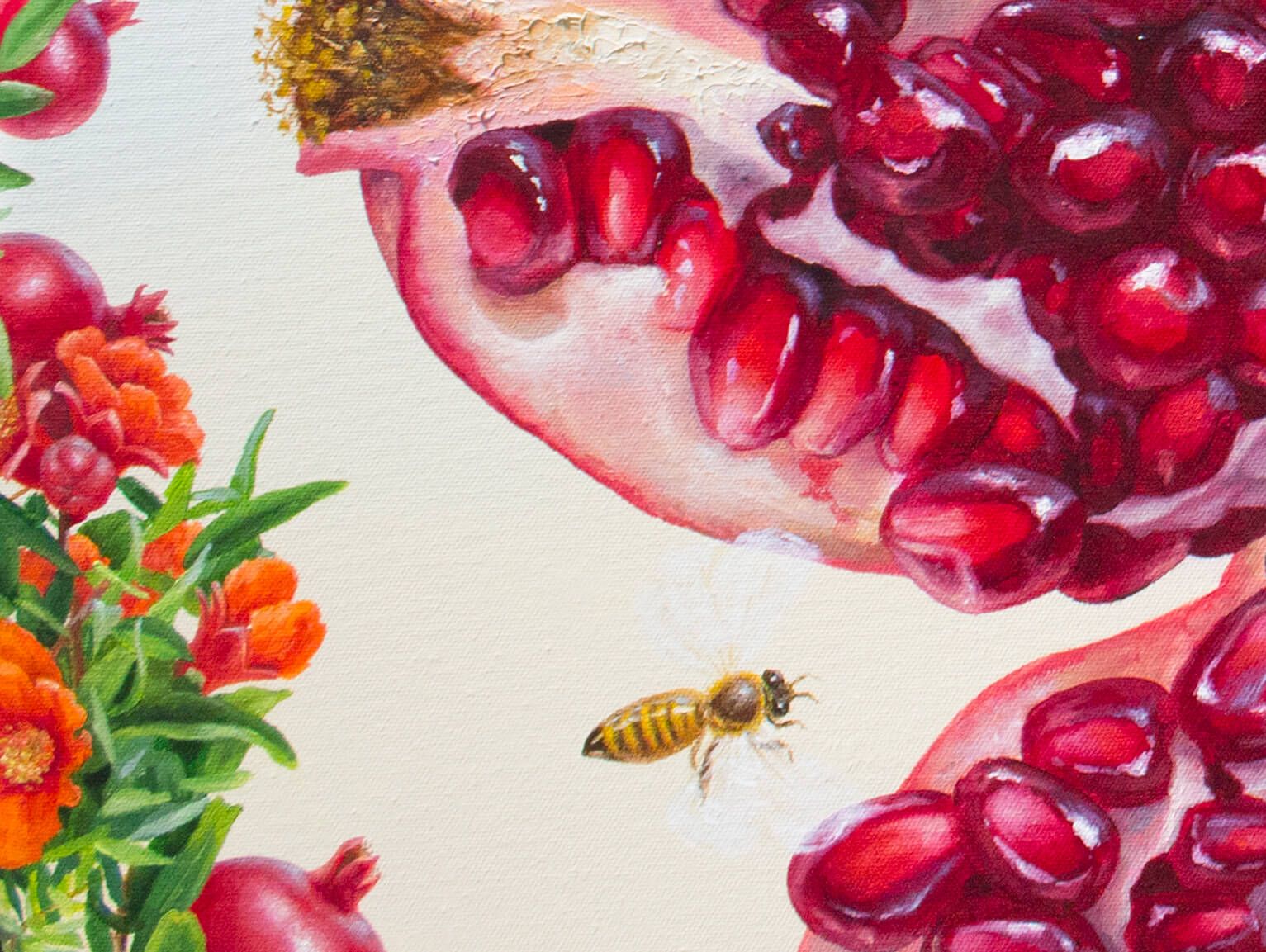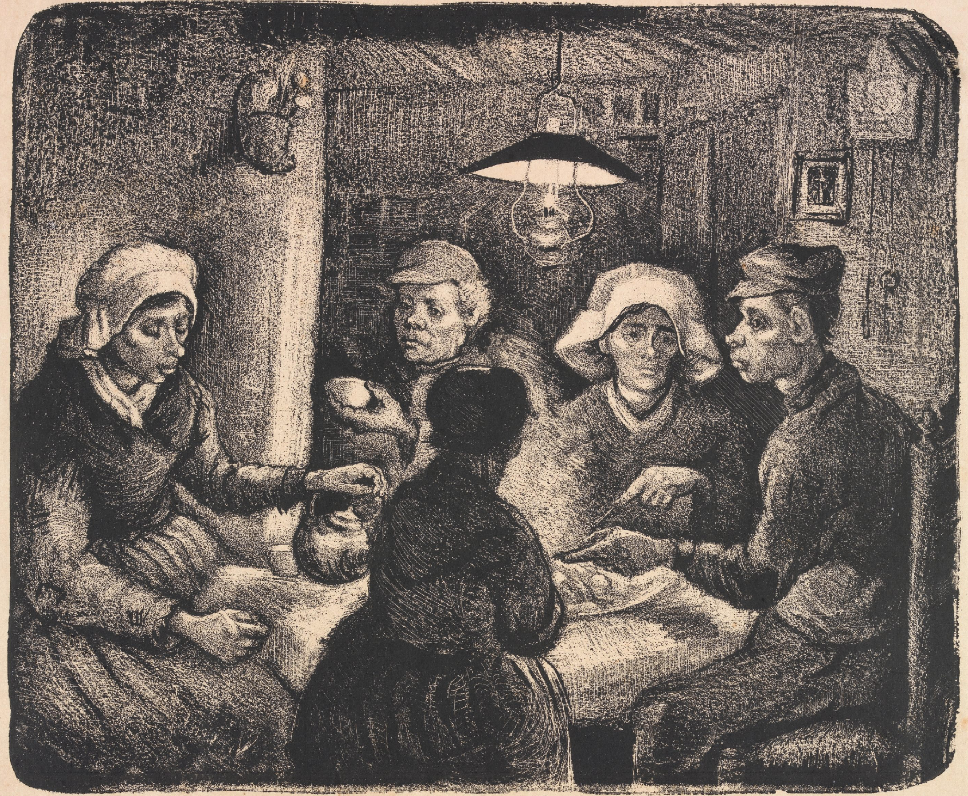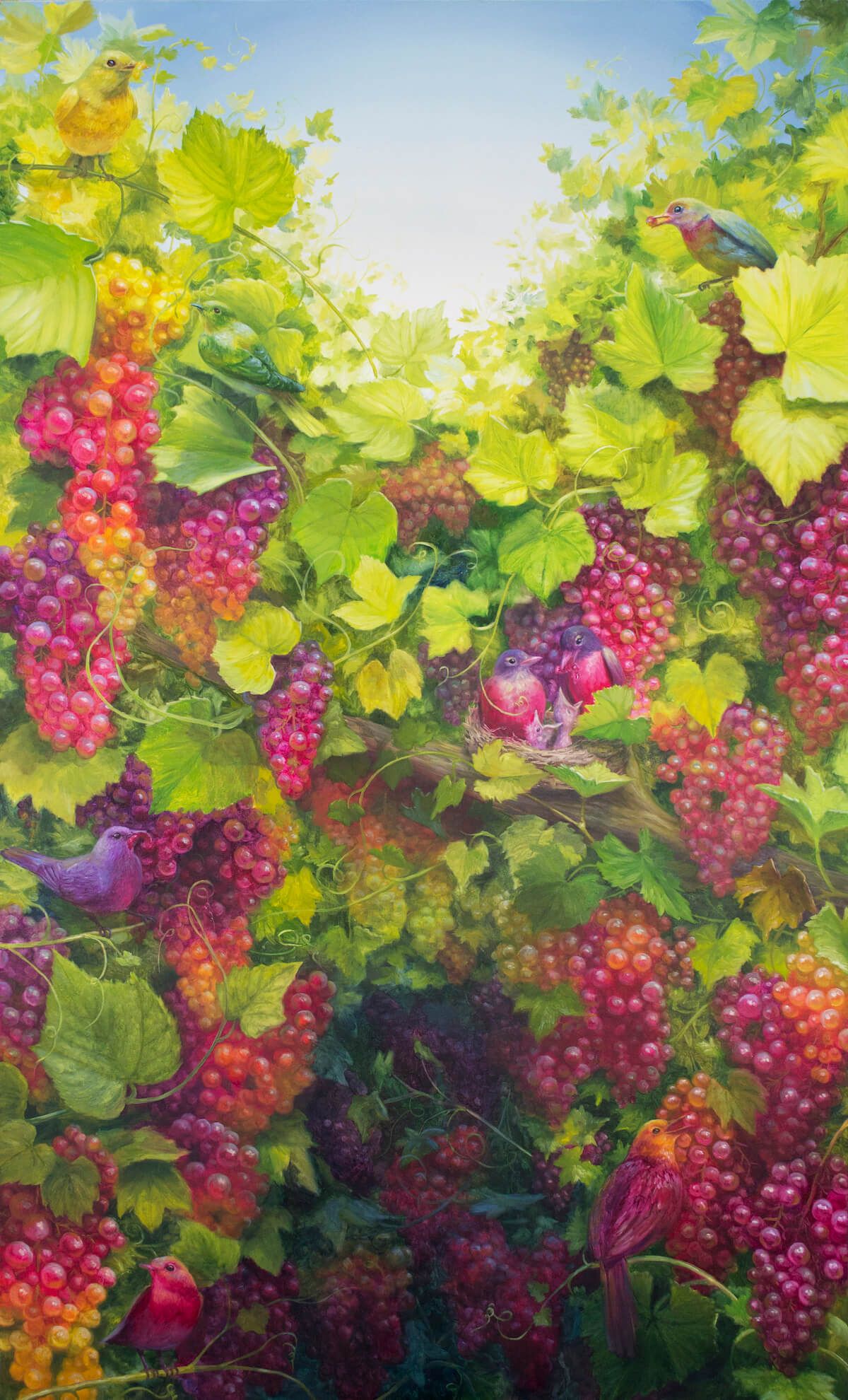Interwoven Spiced Worlds
From the ‘Entwined Matter’ collection. Courtesy of the artist and Tashkeel.
Paola Anziche’s art is a universe of tactile and culturally-rich experiences. Usually hanging from the ceiling and consisting of natural materials, Anziché’s artworks engage the minds, souls, and senses of viewers—urging them to interact and become one with her art. The contemporary Italian artist combines research into weaving techniques with craft and textile traditions to create soft, ecologically-sustainable sculptures.
Her captivating textile pieces beautifully interlace various fields together—from art and anthropology, to history and ecology, among others. You can’t help but be lured into studying their colors, feeling their textures, smelling their scents, and learning their stories.
Anziché lives in Turin, Italy.
Her work has been exhibited at many institutions in Italy and elsewhere, including Salvatore Ferragamo Museum in Florence, Italy; Turner Contemporary in Margate, England; Tashkeel in Dubai, United Arab Emirates; and many others. She has also participated in several artist residency programs around the world, such as ones in France, Brazil, The Netherlands, and UAE.
We asked Anziché about art, the themes she likes to explore in her work, and her artistic projects. We leave you with her own words detailing her unique journey and experiences in the world of textile art.

From the ‘Entwined Matter’ collection. Courtesy of the artist and Tashkeel.
The works seen in ‘Entwined Matter’ are part of a process of thought and investigation into the ‘hidden’ culture that surrounds Dubai and beyond. By weaving spices and salt into the Loro Piana fibers, I wanted to pay homage to the ancient relationships and trading routes that the United Arab Emirates has always shared with its neighboring countries – an interwoven culture forged at this crossroads between the East, South and Asia.
My site research in Dubai for the Loro Piana Residency at Tashkeel began in early September. I visited many locations related to vernacular architecture including archaeological locations in Al Ain and around Dubai, as well as the BIDWA Social Development Programme, a center in Dibba Al Hisn that safeguards ancient material cultural practices run by Irthi Contemporary Crafts Council.
By carefully observing places and environments, I discovered a wealth of references implicit in them; from the large corals traditionally used as bricks in the buildings of Hamra Village, Ras Al Khaimah (precious fractal geometries) to the varying shades of sand (especially noticeable at sunset) at Al Jahili Fort in Al Ain and the chromatic variations of the sands at Meliha Archaeological Centre and Buhais Geology Park in Sharjah, as well as the suggestive ‘crusts’ of sand and salt found in the salt lakes (‘sabhka’ in Arabic) of Al Wathba, Abu Dhabi.
I have integrated three elements of the region in the Loro Piana textiles and fibers. The spices are there because they have a symbolic meaning of the trade that has always been with culture forged at this crossroads between the East, South and Asia.
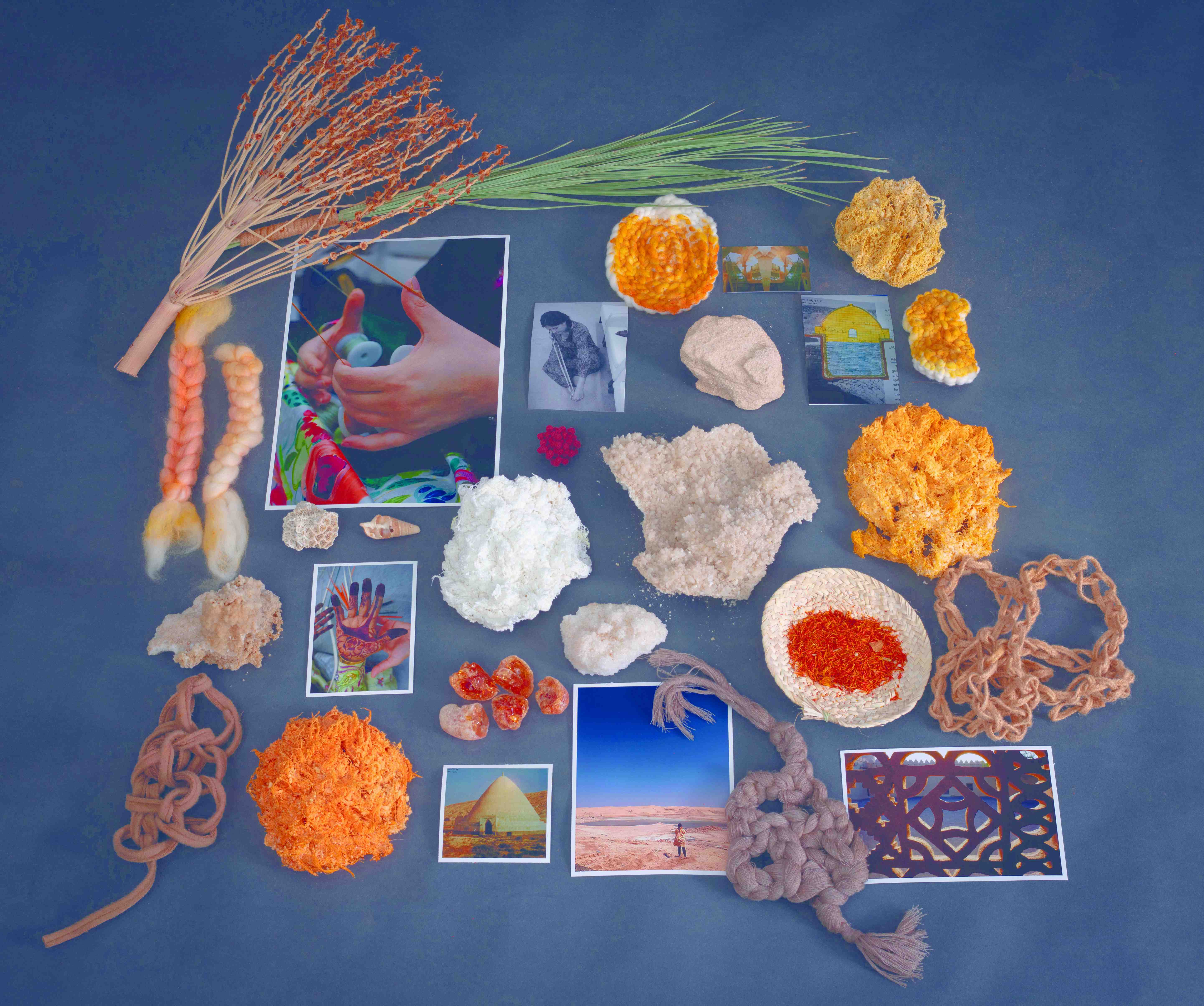
From the ‘Entwined Matter’ collection. Courtesy of the artist and Tashkeel.
From the ‘Entwined Matter’ collection. Courtesy of the artist and Tashkeel.
During my studies at the Städelschule in Frankfurt am Main (2000-2004), the curriculum was not only based on the discussion of artworks and artistic practice with the main art professor, but also included various occasions of insight and meeting with various theoreticians, philosophers and art scholars, offering many examples for widening the understanding of contemporary art. Thus, it became relevant to me to explore historical perspectives and put them in relation to my artistic practice.
By offering a few examples of my recent activities - workshops and residencies that constituted occasions for creating, researching and studying - I would like to illustrate some of the research itinerary that has been the basis for the latest developments of my artistic practice.
In 2005 I was invited to participate in a workshop at Vitra Museum in Boisbuchet (France), where I took part in the construction of arboreal bamboo architectures. I had the
opportunity to learn architectural and constructive techniques with plants as palm leafs and natural fibers like bamboo. Through this experience, I encountered the books Architecture Without Architects (1987) and The Prodigious Builders (1979) by Bernard Rudofsky. These readings brought me closer to ideas regarding self-sustainability and eco-compatibility, a contemporary issue connected to the rediscovery of our natural living environment.
After a residency and a show in Baku (Azerbaijan) at the Art Center Yarat in 2015, I had the chance to investigate traditional local weaving techniques. Since I had the opportunity to visit an old mosque, originally on the Silk Road, I noticed how that place of worship was completely empty. My new wool work, based on concave and convex shapes, was inspired by the strong impression of emptiness that I had there. In the summer of 2015, in Helsinki, I researched the traditions and the origins of Scandinavian tapestries, more specifically of Finnish rugs. This possibility helped me to study and get closer to the influences of the traditional carpets created by the indigenous Sami population.
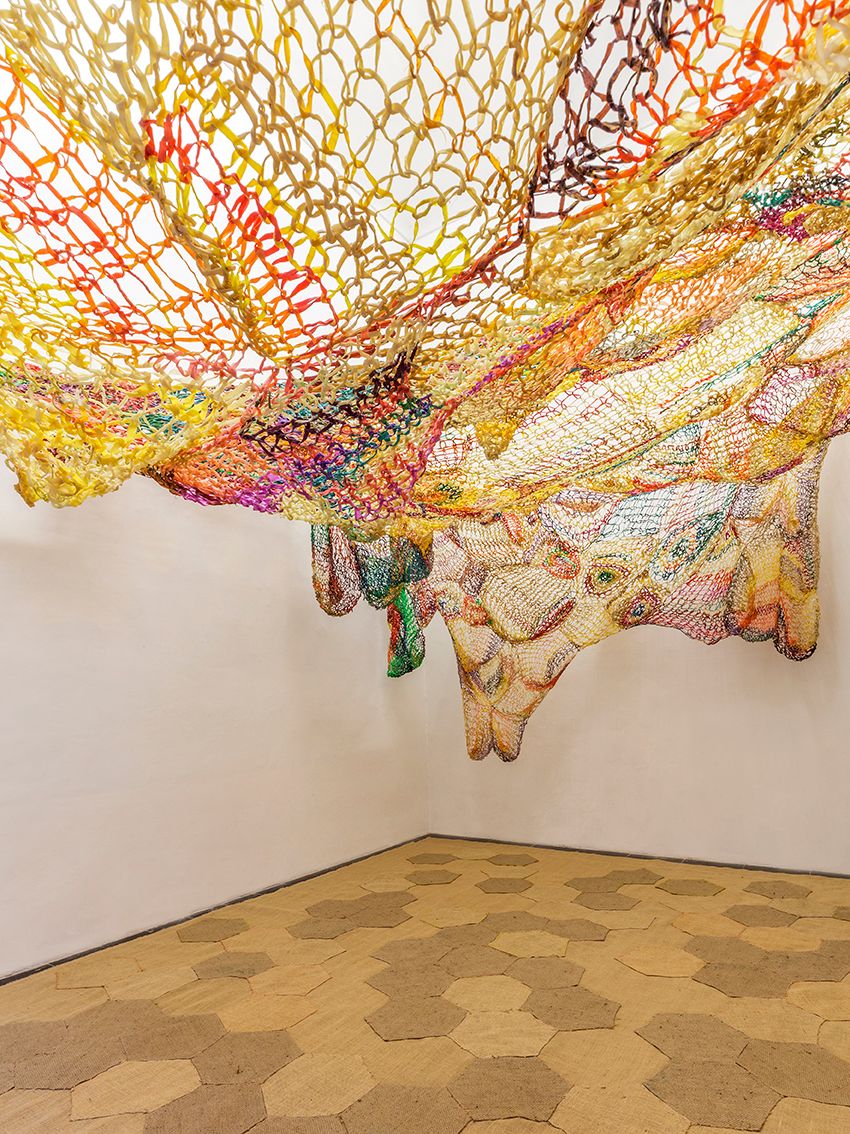
Courtesy of the artist and Tashkeel.
I consider art to be an activity at the crossroads of wider interdisciplinary influences. Through different media and materials, I investigate the possibilities for art to connect diverse disciplinary fields, from ecology and folk/craft traditions to anthropological and scientific activities. In my art practice I have developed a keen interest in natural materials that are at the core of my modus operandi, where you can “see with the hands”, an intense and attractive tactile dimension in experiencing the works.
My research originates from journeys through contexts that are very different from one another. During these journeys and processes I am exposed and come into contact with different craft traditions that have been reworked through time, from person to person, through a subjective reinventive process. Getting closer to natural/vegetable textiles creates the opportunity for me to understand the cultural and material life in the urban as well the suburban context. This allows me to enter into a relationship with the territory and the inhabitants from an ecological perspective.
My artworks are fully conscious of and responsive to ecological issues.
In the making of my works, I choose not to use anything derived from or based in synthetic and/or polluting materials. I am interested in discovering the potential of natural materials through the process of their transformation. The manual component and focus on the properties of the chosen materials (with a particular predilection for natural ones) are at the core of my artistic practice.
While I am making works that invite the viewer to experience their form, the ecological point of view I adopt also implies observational study of the related political and environmental problems, as well as geographical and territorial transformations that lead to their final manifestation. These ecopolitical views are not explicitly visible in the outcome of my work, but are an integral part of my process, wherein the sculptural result is a final phase of the work.
My research involves a rigorous scientific point of view, observing and studying related political and environmental problems, as well as geographical and territorial transformations. As this research is not always explicitly visible in the outcome of my work, I am focused on an ecological way of working with materials as an integral part of the process wherein the sculptural results are the final phase of the work.
The recent project “The Earth Sounds”, back in 2020. The work is an invitation to the viewer to dive in and luxuriate, to reflect deeply upon the relationship between art and the world of bees. It is an artwork that I had produced during the lockdown period in the countryside from natural fibers including linen, cotton and beeswax; and woven by my bare hands.
The work confronts the viewer with himself, with his own subjective perception and with his own behavior in space. When entering, the visitor is invited to walk on the beehive carpet without shoes, and then physically enter the work. Upon entering the work environment, you will notice the presence of a persistent odor.
The smell is actually the scent of beeswax that is released from the net that expands into space above; a sort of carpet in which strips of colored fabrics, soaked in beeswax, intertwine. The smell of beeswax stimulates the nervous and perceptive system of our body and influences our mood, lending to an overall calming effect.
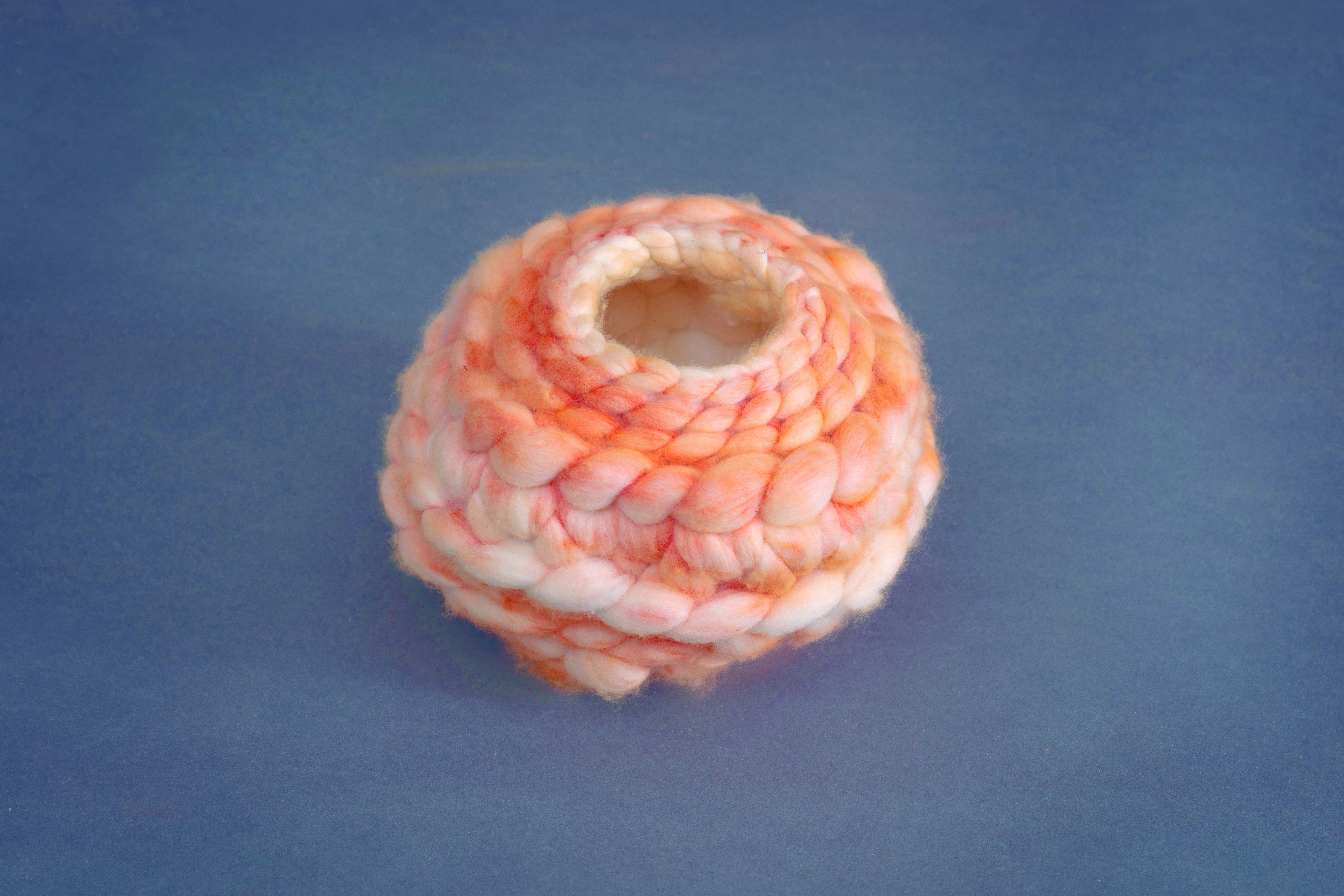
From the ‘Entwined Matter’ collection. Courtesy of the artist and Tashkeel.
In March, I was invited to Istanbul for a research project initiated by an artist.
I’m also working on a new book about weaving as one of the oldest
cultural techniques—older than agriculture and writing. In this book, I’m collecting all my experiences in countries where I’ve learned and did workshops on weaving without a loom with native people in countries like Guatemala, Bolivia, Azerbaijan, and UAE.
Respect nature and always be aware of how urgent the planetary crisis is, as well as be open to and curious about knowing people from different cultures.
The Japanese farmer and philosopher Masanobu Fukuoka. His book “One-Straw Revolution” is excellent.
Paola Anziche’s art is a universe of tactile and culturally-rich experiences. Usually hanging from the ceiling and consisting of natural materials, Anziché’s artworks engage the minds, souls, and senses of viewers—urging them to interact and become one with her art. The contemporary Italian artist combines research into weaving techniques with craft and textile traditions to create soft, ecologically-sustainable sculptures.
Her captivating textile pieces beautifully interlace various fields together—from art and anthropology, to history and ecology, among others. You can’t help but be lured into studying their colors, feeling their textures, smelling their scents, and learning their stories.
Anziché lives in Turin, Italy.
Her work has been exhibited at many institutions in Italy and elsewhere, including Salvatore Ferragamo Museum in Florence, Italy; Turner Contemporary in Margate, England; Tashkeel in Dubai, United Arab Emirates; and many others. She has also participated in several artist residency programs around the world, such as ones in France, Brazil, The Netherlands, and UAE.
We asked Anziché about art, the themes she likes to explore in her work, and her artistic projects. We leave you with her own words detailing her unique journey and experiences in the world of textile art.

